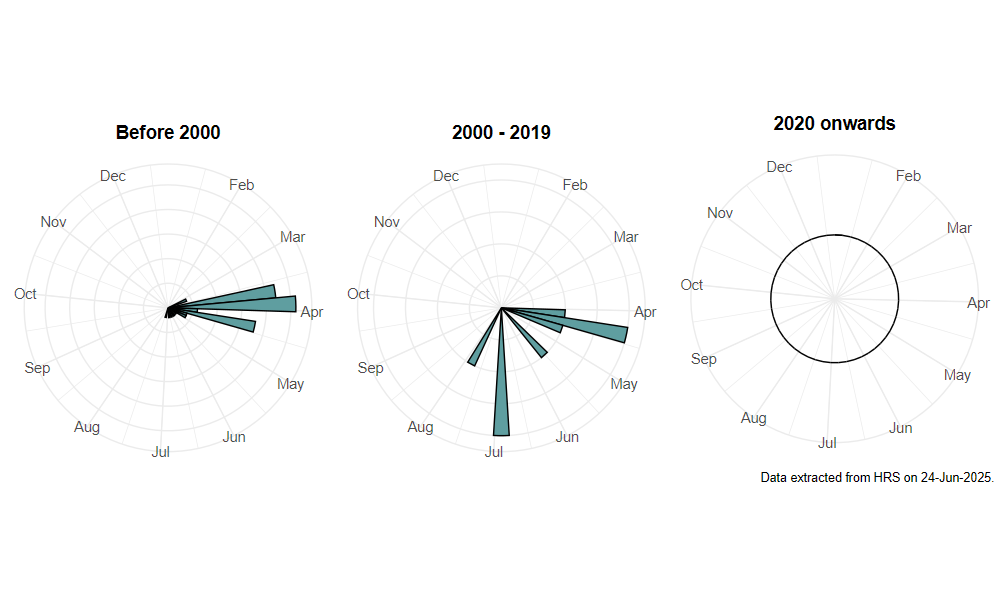Melangyna barbifrons (Fallén, 1817)
Identification
Identification difficulty = 4. ![]()
![]() according to Ball & Morris, 20241
according to Ball & Morris, 20241
Synonymy
Syrphus barbifrons Fallén in Coe(1953)2.
Biology
This is a woodland species, possibly occurring in both coniferous and deciduous woodland. The larvae of the genus Melangyna are aphidophagous, but those of M. barbifrons are as yet unknown. The little evidence to date suggests that M. barbifrons is associated with shrub layers and canopy trees. Adults fly very early in the season and have been noted visiting sallows Salix sp. flowers.
Flight period
The following plots show the number of unique records per week excluding those reported to be of immature stages.

Status
Lower Risk (Near Threatened) - Ball & Morris, 20143. Notable - Falk, 19914.
Distribution
Apparently disjunct: widely scattered across southern England to southern Cumbria and North Yorkshire, reappearing in the Highlands of Scotland. Records since 1990 include: Derbyshire, South-west Yorkshire, North-east Yorkshire and East Inverness & Nairn.

-
Ball, S., & Morris, R. (2024). Hoverflies of Britain and Ireland. WILDGuides (3rd ed.). Oxford: Princeton University Press. ↩
-
Coe, R. (1953). Diptera: Syrphidae. Handbooks for the Identification of British Insects, 10(1), 1–98. ↩
-
Ball, S., & Morris, R. (2014). A review of the scarce and threatened flies of Great Britain. Part 6: Syrphidae. ( No. 9). Species status (pp. 1–130). Peterborough: JNCC. ↩
-
Falk, S. (1991). A review of the scarce and threatened flies of Great Britain. ( No. 39). Research and Survey in Nature Conservation (pp. 1–194). Peterborough: NCC. ↩